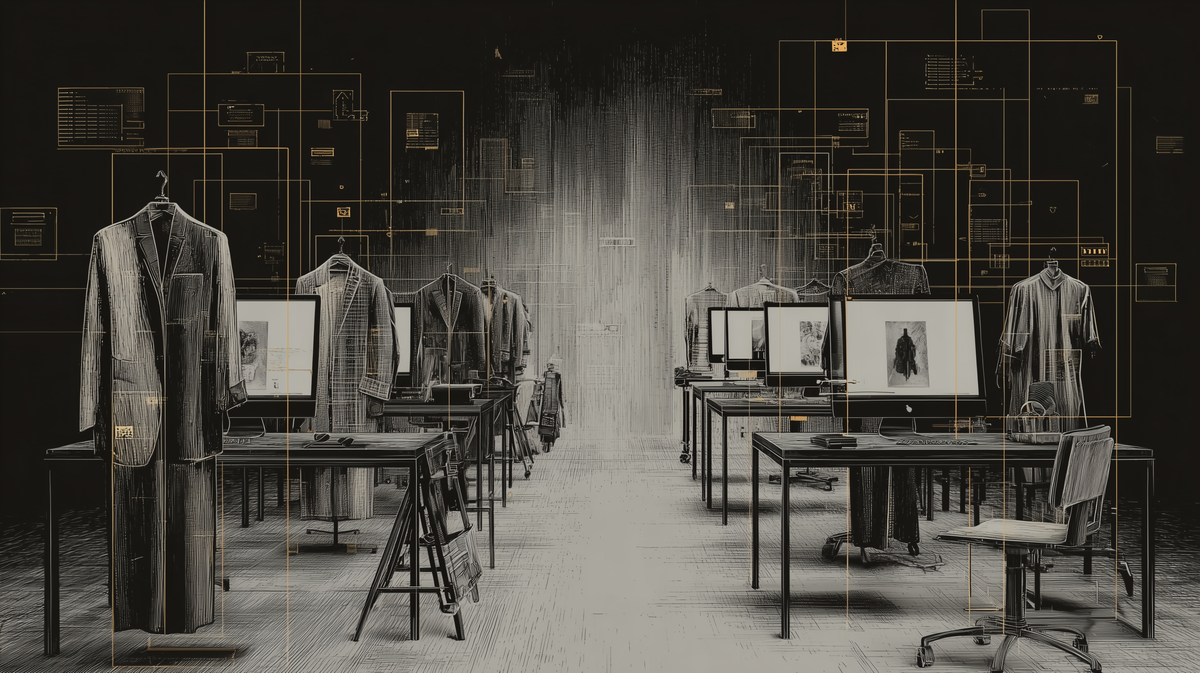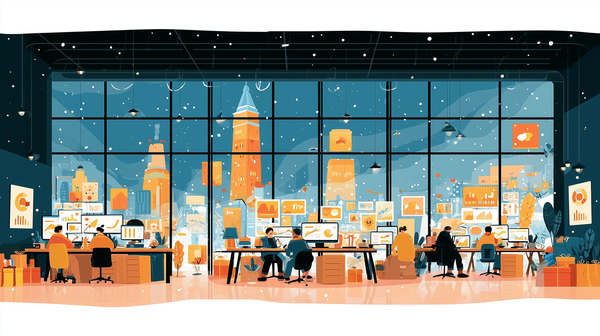Automating Content Creation with AI for Shopify Brands

Let’s skip the hype: AI-powered content automation isn’t some distant future. For Shopify DTC brands, it’s already reshaping how operators build, launch, and scale. Think: launching a new SKU and having a full suite of on-brand ads, product descriptions, and visuals live before your second coffee—no agency retainer, no 10-person creative team. This isn’t just theory; it’s a competitive reality, and the numbers back it up.
Shopify’s AI features are now so integral, they’re lifting merchant demand and revenue forecasts (Reuters). For DTC founders, generative AI isn’t a shiny add-on—it’s fast becoming table stakes.
Why Generative AI Is Dominating DTC (Right Now)
The generative AI wave—ChatGPT for copy, Midjourney for visuals, and now Shopify Magic for everything in between—has swept through DTC marketing. Seventy-three percent of marketers are already using generative AI for content creation, and nearly half trust it for customer-facing assets (MarTech). Shopify’s own survey? About half of merchants plan to use AI for content generation, with a third targeting marketing, SEO, and audience segmentation (Investing.com).
Why the sudden inflection point? Accessibility. Shopify’s “Magic” suite now bakes AI into every plan—writing product descriptions, generating images, crafting discounts, and tracking sales—no code required (Investing.com). As one analyst put it: Shopify is “giving these merchants, who are usually small, tools that are very sophisticated” (Investing.com). Translation: the creative playing field just got a lot more level.
What AI Actually Delivers for DTC Brands
Let’s get specific. Modern AI tools can:
- Write product descriptions, emails, and ad copy—in seconds, in your brand voice.
- Generate multiple versions for different personas or platforms.
- Build entire store layouts from a few keywords with Shopify’s AI Store Builder (Investing.com).
A Shopify VP summed it up: instead of “dragging and typing,” you describe your vision, and AI builds “the best likeness we can imagine” (Investing.com).
But AI isn’t just for copy. Zalando, the European retailer, now creates 70% of its campaign imagery with AI, slashing production time from 6–8 weeks to just 3–4 days and cutting costs by 90% (FashionNetwork). The real win? Speed and relevance. As Zalando’s VP of Content Solutions put it, AI isn’t always “better” than humans—but it delivers new, on-trend content to customers at breakneck speed. For DTC brands, that’s a competitive edge you can’t ignore.
Operator ROI: Daily Harvest’s team saved 20+ hours per month and boosted page views by 40% after adopting AI tools (Investing.com). Their Director of Product Management calls Shopify’s AI personalization “a game-changer,” optimizing messaging and even reducing packaging sizes for 15% of orders. More efficiency, more engagement, less grunt work.
For a quick pulse on how operators are using AI in the wild, check out this thread:
The $YOURAI content app offers revolutionary content styling for over 4.6 million @Shopify stores.
— YOUR AI (@yourtokens) May 27, 2024
Product content automatically matches your shop's look, and you can customize even more. Get an insight here:https://t.co/Ugj9HFgdDc pic.twitter.com/Dli8gY401x
Operator POV: How Founders Are Actually Using AI
Let’s get out of the press release and into the trenches. Heather Perry, CEO of Klatch Coffee, moved her family roastery to Shopify for its AI tools:
“Running the business from scratch during the holiday season? I can’t even imagine doing it manually” (Investing.com).
She uses Shopify Magic to spin up product copy and site changes on the fly—crucial during peak season.
Kyle Widrick, CEO of Win Brands Group, is betting big:
“Our expectation is that AI will touch every aspect of our business within the next twelve months, if not sooner” (Modern Retail).
But let’s not get carried away. Alexandra Zatarain, co-founder of Eight Sleep, uses AI as a creative assistant, not a replacement. Her team drafts emails and brainstorms ad ideas with AI, then polishes the output to match their brand voice (Modern Retail). Her take:
“They are a way to do some types of work faster, but don’t necessarily do it better.”
The consensus? AI is your creative assistant, not your creative director. Your brand still needs your fingerprints.
For more on how founders are experimenting in real time, this thread is worth a scroll:
AI Agents for E-commerce are here.
— Kritarth Mittal | Soshals (@kritarthmittal) July 23, 2025
This company raised $52M to build an army of agents that generate Meta ads, optimize SEO, and skyrocket Shopify sales.
It can run email campaigns, analyze KPIs on Amazon, and A/B test on Google Ads.
Here's how to automate growth with it: 🧵
The DTC Operator’s AI Playbook: 5 Steps to Real Results
Here’s how to actually make AI work for your Shopify brand:
1. Start Where ROI Is Obvious
Automate the repetitive, template-driven stuff first: product descriptions, FAQs, basic ad copy. Let AI draft, then have a human polish.
2. Teach AI Your Brand Voice
Feed your AI examples of your best copy. Use clear prompts (“playful, uplifting tone” or “highlight eco-friendly features”). Garbage in, garbage out.
3. Keep a Human in the Loop
AI can hallucinate. Always QA before publishing. Smart teams are building internal “AI playbooks” to document which tools to use, for what, and how to prompt them.
4. Foster a Culture of Experimentation
Encourage your team to ask, “Could we have some fun with this by using AI?”—whether it’s drafting a wholesale contract or a holiday catalog (Modern Retail).
5. Stay on Top of the Ecosystem
Shopify’s Summer 2025 release dropped an AI-powered theme designer (“Horizon”) that generates page layouts from a description, plus AI shopping assistants that answer customer questions in real time (Sanomads). Shopify’s president, Harley Finkelstein, summed it up: “search products with AI, add to cart with AI, check out with AI—agentic commerce has arrived” (Twstalker). Translation: the future is AI-powered, end-to-end shopping.
For a visual breakdown of how Shopify’s AI stack is evolving, this tweet nails it:
Today, Shopify is launching our AI store setup. Now, with just a simple description of your business, you can get a custom-designed theme that makes your website launch-ready. This is just one of the ways we are leveraging AI to help our merchants start and scale faster.
— Harley Finkelstein (@harleyf) March 5, 2025
We’ve… pic.twitter.com/2t9muwVJ4D
Automation ≠ Connection: Where Human Touch Still Wins
Here’s the part most AI evangelists miss: automation is powerful, but human connection still closes the deal. Take cart recovery. Most brands rely on automated flows that—let’s be honest—feel automated. LiveRecover flips the script. It’s an SMS cart recovery platform powered by real human agents. When a shopper abandons their cart, LiveRecover’s team personally texts, answers objections, and helps close the sale in real time.
Why does this work? Because people buy from people, not bots. LiveRecover consistently outperforms automated flows. Customers feel like they’re talking to a person, not a script—so conversion rates go up, and trust in your brand stays intact. For DTC operators, this is the play: let AI handle the grunt work, but keep humans in the loop where relationships and revenue are on the line.
The Takeaway for DTC Operators
Content is still king in ecommerce—but AI is helping crown a lot more kings and queens. Shopify brands are using generative AI to create and personalize content at a scale that was unthinkable just a few years ago. The data is clear: teams are saving dozens of hours and seeing double-digit lifts in engagement (Investing.com). But this isn’t plug-and-play magic. The real winners are those who thoughtfully integrate AI, keep a human touch, and adapt fast.
As a founder to founder: dive in, start small, and let the robots help you sell—but always keep your brand’s humanity at the core.
Subscribe for weekly DTC insights




